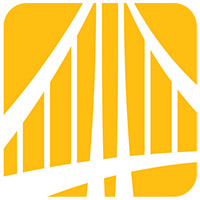6 Strategies to Ease Staff Burden with Digital Healthcare Technology
Feeling the strain of staffing shortages? Discover six actionable ways to reduce staff burden and improve patient care by harnessing the power of digital health tools.
December 22, 2022
6 min. read

Staff burnout and attrition are continuing to rise throughout the healthcare industry, contributing to the ongoing staffing shortage. This creates a pattern that can quickly spiral. As staff burnout rises, so do attrition rates, increasing the burden on the remaining employees and fueling their burnout in turn.
Luckily, there is something your organization can do right now to help reduce staff burden before it becomes a much bigger problem: turn to digital healthcare technology. Digital healthcare technology, such as guided care pathways, mobile apps, and online home exercise programs (HEP), can help streamline workflows, reduce manual tasks, and increase time spent with patients, all contributing to an improved staff experience.
Here are six ways digital health can help you reduce staff burden.
Patient Education
A patient's understanding of their condition and treatment plan is an important component of their engagement, and effective online patient education can help a larger population of patients achieve this understanding with a shorter time burden for staff.
Better patient self-efficacy can be achieved by educating patients on their condition and the importance of adhering to their treatment regimen. With a comprehensive online patient education library, clinicians can assign standardized resources to patients so they can learn more about their condition at their own convenience. This way, patients can come to their appointments with a better understanding of their condition, and the visit can be spent on treatment, discussing care plans, or answering patient questions.
Patient education tip:
Pairing patient education with a home exercise program helps to reinforce what they've learned with practical applications of exercises they can perform at home.
Home Exercise Programs
Home exercise programs are a key component of high-quality therapy, providing important care continuity for patients while reducing the cost and time commitment of supervised therapy sessions for providers. Digital HEP is a simple yet powerful tool that allows clinicians to quickly and easily assign online exercise programs to patients.
Effective HEP helps engage patients and has the added benefit of ensuring the patient's progress doesn't stagnate between appointments. This helps patients be more prepared for their next visit with their clinician, streamlining their care plan and saving time over the course of treatment.
HEP tip:
Medbridge's Home Exercise Program Builder allows you to upload custom HEP or even request exercises you'd like to see in the future, helping you take patient program customization to the next level. And by integrating Medbridge HEP, organizations are seeing as much as five-minute savings per clinician per patient!
Patient Adherence Tracking
Patient adherence tracking helps identify behavioral patterns and barriers to adherence to help boost patient satisfaction and improve clinical outcomes. Patient adherence tracking can be used to flag concerns, pain, and difficulty with prescribed HEP before a larger problem arises. This helps address these problems between visits, allowing the time with the clinician to be spent more efficiently.
Patient adherence tracking tip:
Integrating digital health tools with an EMR can help track long-term trends in patient satisfaction and pain and difficulty reporting.
Patient Mobile Apps
Patient mobile apps provide a platform for patient engagement, gather powerful patient activity insights, and encourage better communication between patients and clinicians. Built-in messaging is effective for non-emergency interactions like patient questions and check-ins, and gamification, reminders, and push notifications engage patients as active, daily participants. Together, these elements provide a convenient way to strengthen the therapeutic alliance.
Patient mobile app tip:
Push notifications are a powerful tool to cultivate continued engagement; in fact, push notifications have been shown to increase patient interaction with a health app by up to 11.8 percent within the next 24 hours.1
Remote Therapeutic Monitoring
Remote therapeutic monitoring (RTM) allows PTs and OTs to be reimbursed for creating engaging care programs using patient education and exercise templates, and remotely tracking and monitoring patient progress. By enrolling patients in RTM, they can improve documentation and tracking efficiency while reducing costs.
Here's an example of RTM in action: A patient with low back pain visits a clinician, who prescribes a Medbridge low back pain pathway. As he is guided through the program, performs the exercises, and views the patient education, the platform also gathers his exercise activity and other information, such as pain and difficulty levels. Using this data, the clinician can bill according to CMS’s codes and capture a new line of revenue, approximately $166.25 per patient episode2 for the same patient interactions that many clinicians were already conducting while also driving better patient engagement.
Remote Therapeutic Monitoring tip:
You can remotely monitor patients while streamlining clinician workflows by assigning Medbridge Pathways with built-in RTM functionality.
Guided Pathways
Guided care pathways help standardize care delivery, reduce variability, and streamline workflows across the care team. By digitizing key parts of the care journey (like triage, education, and exercise progression), clinicians can reduce manual tasks and focus more time on high-impact patient interactions.
This structured approach also supports better coordination and reduces documentation time, helping staff work more efficiently while delivering consistent, high-quality care. For patients, guided pathways offer clear expectations, timely check-ins, and greater engagement between visits.
Guided pathways tip:
Use Medbridge Pathways to assign evidence-based digital programs (like those for MSK conditions, fall prevention, surgical recovery, or pelvic health) to reduce manual work and guide patients through a fully supported, phase-based care journey they can trust.
How Medbridge Can Help
While each of these digital health tools is powerful on its own, the real key to reducing staff burden lies in bringing them together as part of a comprehensive digital care strategy. To see how leading organizations are doing this in practice, watch our recorded webinar, Reimagining MSK Care with Hybrid Models: Leading Organizational Change to Meet Patient Demands. You’ll get practical tips for scaling digital care, supporting your staff, and improving access and outcomes for your patients.
References
Bidargaddi, N., Almirall, D., Murphy, S., Nahum-Shani, I., Kovalcik, M., Pituch, T., Maaieh, H., & Strecher, V. (2018). To Prompt or Not to Prompt? A Microrandomized Trial of Time-Varying Push Notifications to Increase Proximal Engagement With a Mobile Health App. JMIR mHealth and uHealth, 6(11), e10123. https://pmc.ncbi.nlm.nih.gov/articles/PMC6293241/
Internal Medbridge data.






